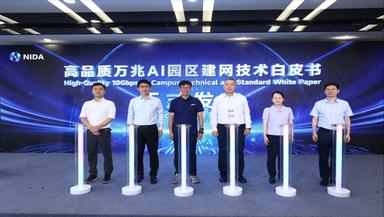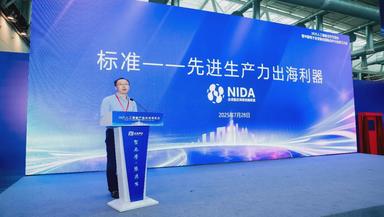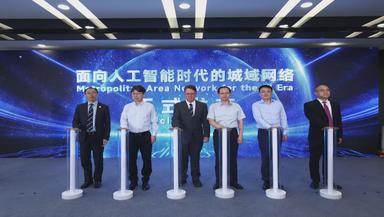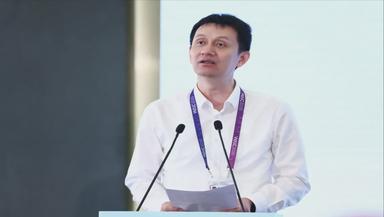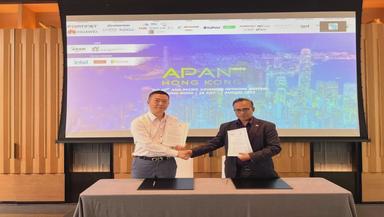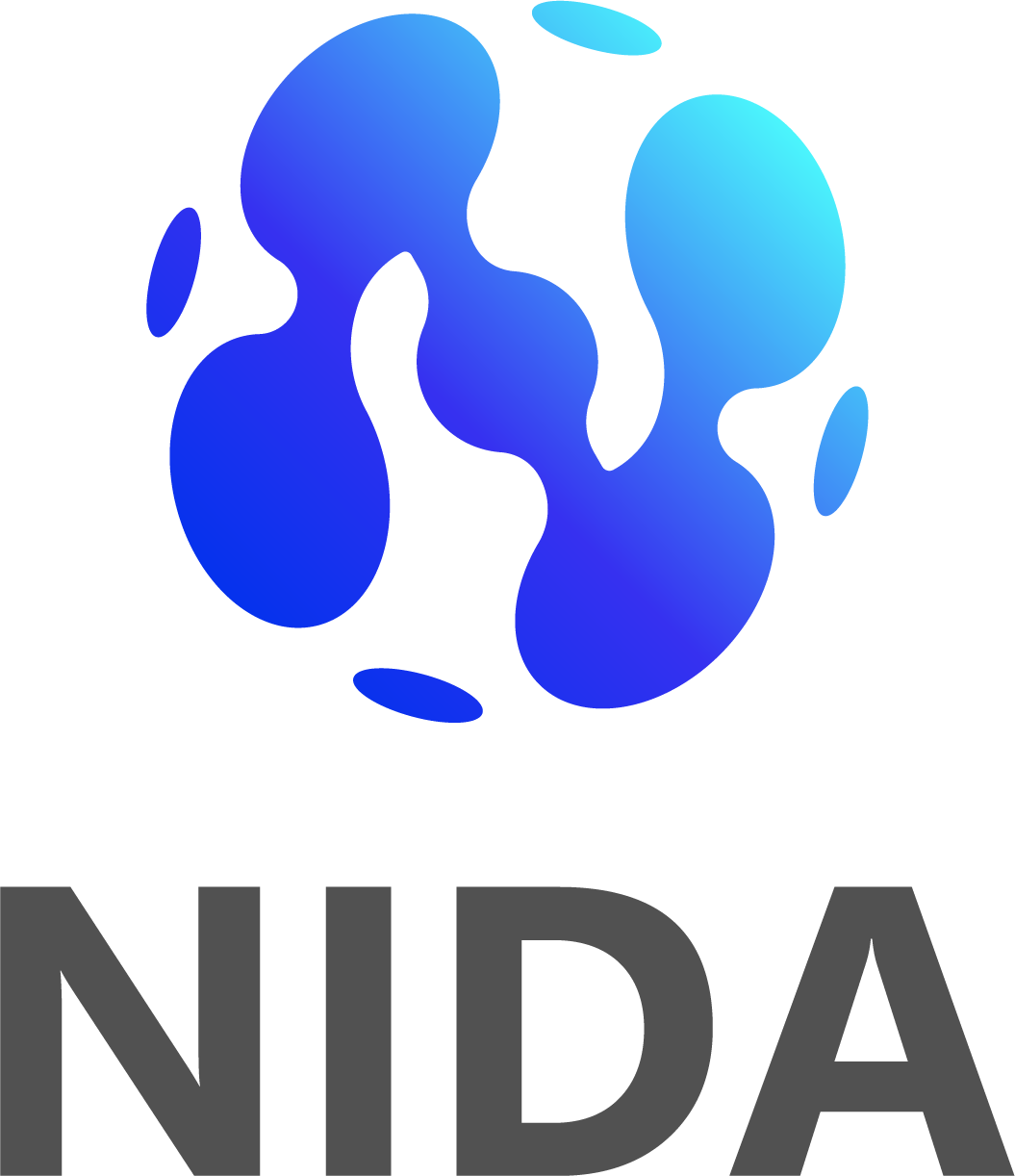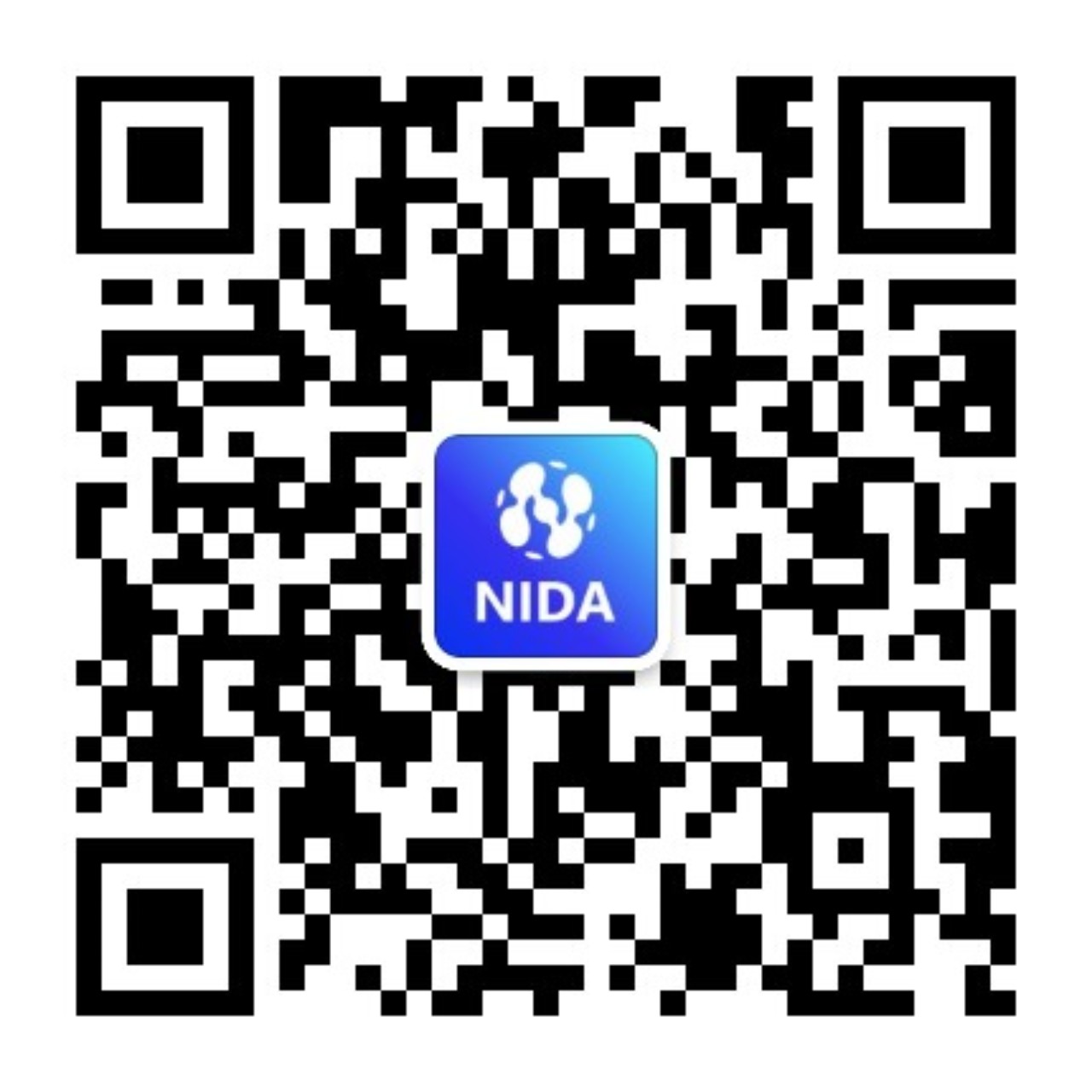[Shanghai, China, July 27, 2025] At the AI + Network Enablement Enterprise Digital Intelligence Innovation and Development Forum, NIDA has jointly released the Technical White Paper on High-Quality 10GE AI Campus Network Construction (hereinafter referred to as the White Paper). As the world's first systematic technical specification for AI campus network construction, the White Paper defines the concept and connotation of high-quality 10GE AI campus network, proposes three architecture systems: application architecture, technical architecture, and physical architecture, and six dimensions of network quality assessment from A to F. In addition, the recommended network architecture and indicators are provided based on industries and scenarios. The release of the White Paper fills the gap in industry standards in the AI campus network construction field and marks the stage of AI campus network construction from "technical exploration" to "standard-led" development.Guo Xiaoyan, chief engineer of China Northeast Design and Research Institute and chairman of the NIDA Campus Network Working Group; Yang Tao, secretary-general of the WAA Alliance; Zhao Shaoqi, president of the campus network domain of Huawei Data Communication Product Line; Lu Xi, deputy secretary-general of the Intelligent Branch of China Survey and Design Association; Yuan Li, standard director of ZTE Corporation Quan and Chen Jie, chief engineer of China Academy of Information and Communications, attended the launch ceremony.Campuses become core carrier networks in the AI era, and upgrades are imminent.As the core carrier of global economic activities, the park carries more than 80% of GDP and more than 90% of innovation activities. Guo Xiaoyan, Chairman of the NIDA Campus Network Working Group, pointed out: "The AI era has higher requirements on campus networks. Network technologies are constantly evolving. Different industries and scenarios have different network construction architectures and recommended specifications. 10GE and Wi-Fi 7 form the infrastructure foundation of next-generation campus networks. The Technical White Paper for High-Quality 10G AI Campus Network Construction is released, which summarizes the three-layer logical architecture and key technologies of AI campus networks. In the future, AI campus networks should be evaluated from six dimensions: (A) self-intelligent network, (B) 10GE ultra-broadband Ethernet, (C) ubiquitous connectivity, (D) defined experience, (E) energy saving, and (F) all-domain security. The Chinese version of the White Paper will be released at this forum. In the future, excellent cases from around the world will be included. Overseas partners will be invited to release the English version together to contribute China's strength to world standards. "Technical specifications fill gaps in the industry and accelerate the implementation of Huawei's solutions.Zhao Shaoqi, president of the campus network domain of Huawei Data Communication Product Line, said: "The AI campus is moving from vision to reality. First, the AI campus leverages AI to enable smart networks to connect everything. In addition, the AI campus also feeds back AI to enhance intelligence through networks and implements interconnection of all intelligent networks. On the whole, the AI campus should build a self-intelligent network with guaranteed experience, energy-saving, and all-domain security based on 10GE ultra-broadband and ubiquitous connections. Huawei's Star River AI campus network solution adheres to the experience-centric network construction concept. Through the wireless, application, O&M, and security experience upgrades, Huawei's Star River AI campus network solution works with customers and partners to build a high-quality 10GE AI campus. "In the future, NIDA will continue to work with industry standards organizations and vendors to promote the implementation of core technical specifications in the White Paper, accelerate the in-depth integration of AI technologies and campus networks, and promote high-quality development of AI campus networks.
2025-07-31
35
Standard -- Advanced Productivity Tools
[Suzhou, China, July 28, 2025] During the 2025 Artificial Intelligence Products Application Expo, the 2025 Artificial Intelligence Cooperation Exchange Conference and the Inauguration Conference of the International Cooperation Branch of the China Electronic Enterprises Association, the Suzhou International Science Park and the Zhejiang University International Governance and Research Center were held in Suzhou. International Expo Center. Industry chain stakeholders from government departments, industry organizations, leading enterprises, standardization and testing institutions, etc. gathered together to discuss the cutting-edge trends of artificial intelligence and international cooperation paths, and actively promote the international competitiveness and influence of China's electronic and information industry.Deng Yiou, Secretary-General of Network Innovation and Development Alliance (NIDA), was invited to attend the conference and delivered a keynote speech on "Standards - Advanced Productivity Tools at Sea".With the continuous development and evolution of China's market, many industries in China have entered the world's leading ranks. However, the voice and leading power in the international market cannot match the increasing hard capabilities. As a result, enterprises often feel unable to meet their needs when they go to sea to participate in international competition. Deng Yiou believes that enterprises with advanced productivity should actively participate in the preparation of international standards, actively influence or even lead the formulation of rules, and hold the right to speak in standards. In this way, standards will become a powerful tool to help offshore enterprises gain a favorable position in international competition.NIDA is an international organization that focuses on network evolution and network construction standards. It is dedicated to helping global enterprises build more innovative network infrastructures by formulating network construction standards. Participating in the formulation of NIDA standards will help enterprises to turn their advanced productivity into the right to speak in standards, establish links with international standards and industry, and lay a good foundation for international development.At the meeting, the International Cooperation Branch of China Electronic Enterprises Association invited Secretary-General Deng Yiou and other six experts to serve as expert members of the International Cooperation Branch of China Electronic Enterprises Association to contribute to the international cooperation of electronic enterprises.Participation in the International Cooperation Branch of China Electronic Enterprises Association will help NIDA to establish cooperative relationships with more technology enterprises, further consolidate industrial forces, and jointly accelerate the development of the next generation network industry.
2025-07-30
14
The First Technical White Paper for MANs in the Artificial Intelligence Era Is Officially Released
During World AI Congress 2025, the Global Fixed Network Innovation Alliance (NIDA) successfully held the AI + Network Empowering Enterprise Digital Intelligence Innovation and Development Forum. NIDA officially released the first MAN white paper for the AI era - Metropolitan Area Network for the AI Era. The white paper, led by China Telecom and co-authored by Huawei Technologies Co., Ltd., ZTE Corporation, and several NIDA members of Zhongguancun Hyper-Connected New Infrastructure Industry Innovation Alliance, systematically describes the overall framework and technical capabilities of next-generation metro networks for the AI era for the first time. This document provides key guidance for building network infrastructure that integrates cloud and network integration and computing and network integration.In recent years, the commercial scenarios of urban AI have changed dramatically: Driven by large open-source models such as DeepSeek and Qwen, large-scale distributed inference has become the core technology for AI implementation and promotion. AI Agent services based on A2A and MCP are rapidly moving to large-scale commercial use. The popularity of lightweight large models enables smart terminals to have local computing capabilities. The computing paradigm shifts from traditional cloud computing to granular computing. In the future, collaboration between 100,000 agents and real-time token interaction with tens of billions of large models will become the norm for city-level AI services, posing new challenges to underlying network infrastructure.The traditional MAN architecture exposes significant weaknesses when supporting large-scale AI scenarios at the city level: Traditional networks cannot support E2E RDMA traffic identification and assurance, and cannot ensure efficient bearer in scenarios such as distributed training, distributed inference, and separation of training, push, and storage. The network control and management mechanism is not intelligent enough to meet the strict requirements of AI traffic for low latency and high reliability, affecting user experience. Therefore, as the proportion of AI services in cities continues to increase, the upgrade of metro network architecture and technologies becomes the key basis for intelligent cities.Based on China Telecom's computing MAN innovation concept, the white paper "Metropolitan Network for the Artificial Intelligence Era" systematically analyzes new scenarios, architectures, and technologies of MANs for the AI era, and is dedicated to building AI-native MANs. Network technologies, such as integrated computing and network, accurate RDMA traffic assurance in all domains, and L4 network autonomous driving, are used to meet urban AI application scenarios where distributed inference, large-scale AI agents coexist, and massive concurrent tokens are deployed. Independent decision-making and intelligent optimization enable efficient support for AItoH, AItoB, and AItoC scenarios, covering the entire AI life cycle from edge nodes to the central cloud, and promoting the generational transition of metro networks from passive bearing to proactive intelligence.This white paper is the first guidance document of the NIDA Alliance for the AI era of urban network infrastructure. Metro networks have officially become a key pillar of the native AI ecosystem, evolving from "connected pipes" to "intelligent nerve centers". This lays a foundation for the explosion of urban AI application scenarios, such as large model training, enterprise inference service, intelligent assisted driving, and personal intelligence.Scan the code to download the white paper "Metropolitan Area Network for the Al Era"
2025-07-29
52
[Shanghai, China, July 27, 2025] The AI + Network Enabled Enterprise Digital Intelligence Innovation and Development Forum hosted by NIDA was successfully held during the World AI Congress (WAIC). During the conference, NIDA, together with seven partners, including Huawei, China Pacific Insurance Corporation, Shenzhen Zhicheng Communications, Bank of Communications, China Construction Group Northeast Design Institute, and China Unicom Research Institute, released the white paper "Enterprise O&M in the Agentic Era - O&M Blueprint for New ICT Infrastructure".Ao Li, chief engineer of China Academy of Information and Communications, attended the forum and said in his speech: "The core of AI and network convergence is to build an integrated service system of cloud, network, intelligence, and computing. This is not only an inevitable result of technological innovation, but also will reshape the innovation paradigm and development model of a wide variety of industries, and become the core engine driving industry transformation." Ma Junfeng, Chairman of the NIDA Self-Intelligence Network Working Group, interpreted the white paper, noting that: "In the Agentic AI era, new ICT infrastructures of enterprises will be service-centric and oriented towards ultra-high availability, excellent experience, and simplified operations. They will focus on the following three capabilities: Intelligent nativeness and resilience, intelligent self-intelligence capabilities of O&M systems, and adaptive and self-evolution capabilities of group intelligence. "This white paper analyzes the evolution trend of enterprise O&M towards digital intelligence and proposes the definition, vision, and key features of AEI ( Agentic Enterprise ICT-Infraucture ), a new enterprise ICT infrastructure Agentic O&M. Based on the AEI evolution pace and key enabling technologies, this document describes two high-value scenarios and reference architectures: enterprise data center and smart campus O&M.AEI features intelligent native intelligence (AI Native Infrastructure )), self-intelligent O&M (Autonomous O&M )), and crowd intelligence (Adaptive Multi-Agent )).AEI's vision is to build a new ICT infrastructure with agentic AI features, improve enterprise digital intelligence productivity, and enable high availability, excellent experience, and simplified operation of enterprise services.In the future, NIDA will work with partners to build new ICT infrastructures featuring Agentic AI. Agentic AI will support O&M system upgrades, boosting enterprises' digital intelligence productivity.
2025-07-29
35
[Hong Kong, July 28, 2025] Li Kun, Director of the Industry Development Department of the Network Innovation and Development Alliance (NIDA), was invited to attend the "IPv6 & 5G Working Group" meeting at the 60th Asia Pacific Advanced Network (APAN) Conference held in Hong Kong. During the meeting, he delivered a keynote speech and signed a Memorandum of Understanding (MoU) with Dr. NAVANEETHAN C. ARJUMAN, Chair of the APAN IPv6 & 5G Working Group. This signing marks a significant consensus between the two organizations in promoting the innovative application of network technologies (such as IPv6 enhance) and industrial advancement.Established in June 1997, the Asia Pacific Advanced Network (APAN) is the most influential non-profit educational and research network organization in the Asia-Pacific region. Its members span 23 countries and regions, including China, Japan, South Korea, and Australia. APAN is dedicated to promoting high-speed academic network interconnectivity and collaborative research on advanced network technologies within the region. Through its biannual academic conferences, APAN brings together global experts to discuss cutting-edge topics such as next-generation internet, cybersecurity, and artificial intelligence, while providing solutions for regional network development challenges. Its IPv6 & 5G Working Group focuses on promoting the deployment, evolution, and innovative application of IPv6 technology in 5G and next-generation networks, serving as a vital platform for regional exchange and collaboration in this field.During the APAN60 "IPv6 & 5G Working Group" meeting, Director Li Kun made a keynote speech titled "IPv6+ Open Standards." He elaborated on the evolving demands for networks—specifically increased flatness, intelligence, sustainability, and security—driven by trends like AI during the next-generation network evolution. To meet the complex network construction requirements of the "four interconnected scenarios" (connecting to computing, connecting to intelligence, connecting to data, and connecting to communication satellites) in next-generation networks, NIDA, as an international industrial organization for network construction standards, focuses on researching and releasing standards based on open technologies like IPv6 enhance. It is actively contributing to building more efficient, intelligent, and reliable next-generation network infrastructure. As a key outcome of the conference, Director Li Kun and Dr. NAVANEETHAN C. ARJUMAN formally signed the MoU. Its contents include:· Sharing technical knowledge/documentation and best practices· Participating in conferences/events hosted by each other· Publishing co-authored articles in respective publications· Jointly promoting network technological innovation and industrial advancement This conference and signing represent NIDA's first collaborative practice with a global educational and research network organization. It marks the beginning of cooperation between NIDA and the APAN IPv6 & 5G Working Group and also establishes an important channel for NIDA to further develop its membership among global educational and research institutions. Amidst the accelerating global digital wave, the collaboration between NIDA and the APAN IPv6 & 5G Working Group will effectively integrate resources and strengths from both sides. Together, they will address the challenges of next-generation network development, laying a solid, open, and innovative network foundation for the prosperity of the global digital economy.
2025-07-29
12
